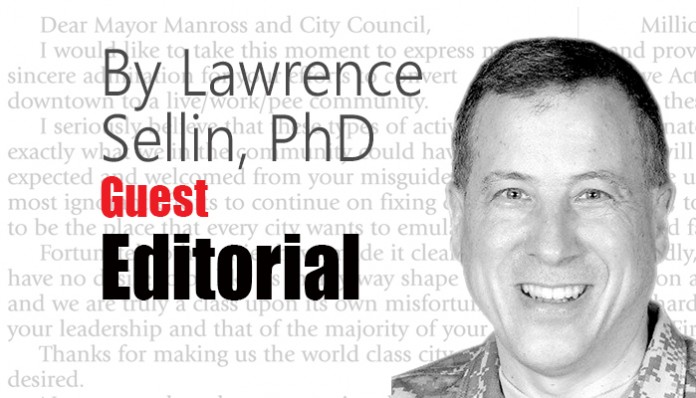So far, the best thing that happened in the battle against radical Islam was the Iran-Iraq War.
As I have written, even without ISIS, the Middle East, the epicenter of radical Islam, is a complex political-military environment dominated by the Sunni-Shia religious conflict, but influenced by ethnic aspirations, tribal rivalries, regional hegemony, superpower competition and ever-shifting allegiances.
In order to maneuver successfully in the Middle East, the United States must better understand the political culture and, when necessary, learn to manipulate its rules.
In an environment with a chronic level of instability, of ambiguities and animosities, we have no permanent friends or enemies and need to reexamine our relationships on a continual basis, including using mutually destructive behaviors among opponents for our short- or long-term advantage.
One such untapped opportunity for greater foreign policy nuance is our contradictory alliance with Saudi Arabia.
For over fifty years, fueled by oil revenues, Saudi Arabia has exported a “rigid, bigoted, patriarchal, fundamentalist strain of Islam known as Wahhabism,” which may have “fueled global extremism and contributed to terrorism” because “the exclusionary Saudi version of Sunni Islam, with its denigration of Jews and Christians, as well as of Muslims of Shiite, Sufi and other traditions, may have made some people vulnerable to the lure of Al Qaeda, the Islamic State and other violent jihadist groups.”
Saudi-funded Wahhabism has, in many cases, undermined local, more inclusive and tolerant variations of Islam. According to Thomas Hegghammer, a Norwegian terrorism expert, the effect of “Saudi proselytizing might have been to slow the evolution of Islam, blocking its natural accommodation to a diverse and globalized world.”
For example, a Pakistani town near the border with Afghanistan, known for its mixture of Sunni, Shia, Barelvi and Deobandi traditions, was transformed after the arrival of a Saudi-trained cleric: “women who had used shawls to cover their hair and face began wearing full burqas. Militants began attacking kiosks where merchants sold secular music CDs. Twice, terrorists used explosives to try to destroy the village’s locally famous [Barelvi] shrine.”
The export of Wahhabism is clearly contrary to the interests of the United States, yet Saudi Arabia remains an “ally,” no doubt influenced by Saudi contributions across the American political spectrum from Senator John McCain (R-AZ) to the Clintons.
In the war against radical Islam, the US cannot continue its role as global firefighter while supporting the arsonist.
The Saudi Wahhabi initiative was accelerated by the 1979 Iranian revolution that “brought to power a radical Shiite government, symbolically challenging Saudi Arabia, the leader of Sunnism, for leadership of global Islam. The declaration of an Islamic Republic escalated the competition between the two major branches of Islam.”
It is ironic, then, that the two foremost promoters of radical Islam, Saudi Arabia and Iran, should now find themselves, not only in a contest for theological hegemony, but for regional political-military dominance including a proxy war in Yemen.
To me it smells like a foreign policy opportunity to further US interests by exploiting naturally-occurring Muslim internecine, whether figurative or literal.
In addition to the Sunni-Shia struggle, the same could be said for other historic enmities not of our making: Turkey-Kurds, Russia-Turkey, Turkey-Syria, Iran-Kurds, Turkish Secularists-Turkish Islamists and a variety of ethnic minorities seeking greater autonomy.
It’s not rocket science. It’s Machiavelli.
Lawrence Sellin, Ph.D. is a retired US Army Reserve colonel, a command and control subject matter expert, trained in Arabic and Kurdish, and a veteran of Afghanistan, northern Iraq and a humanitarian mission to West Africa. He receives email at lawrence.sellin@gmail.com.





